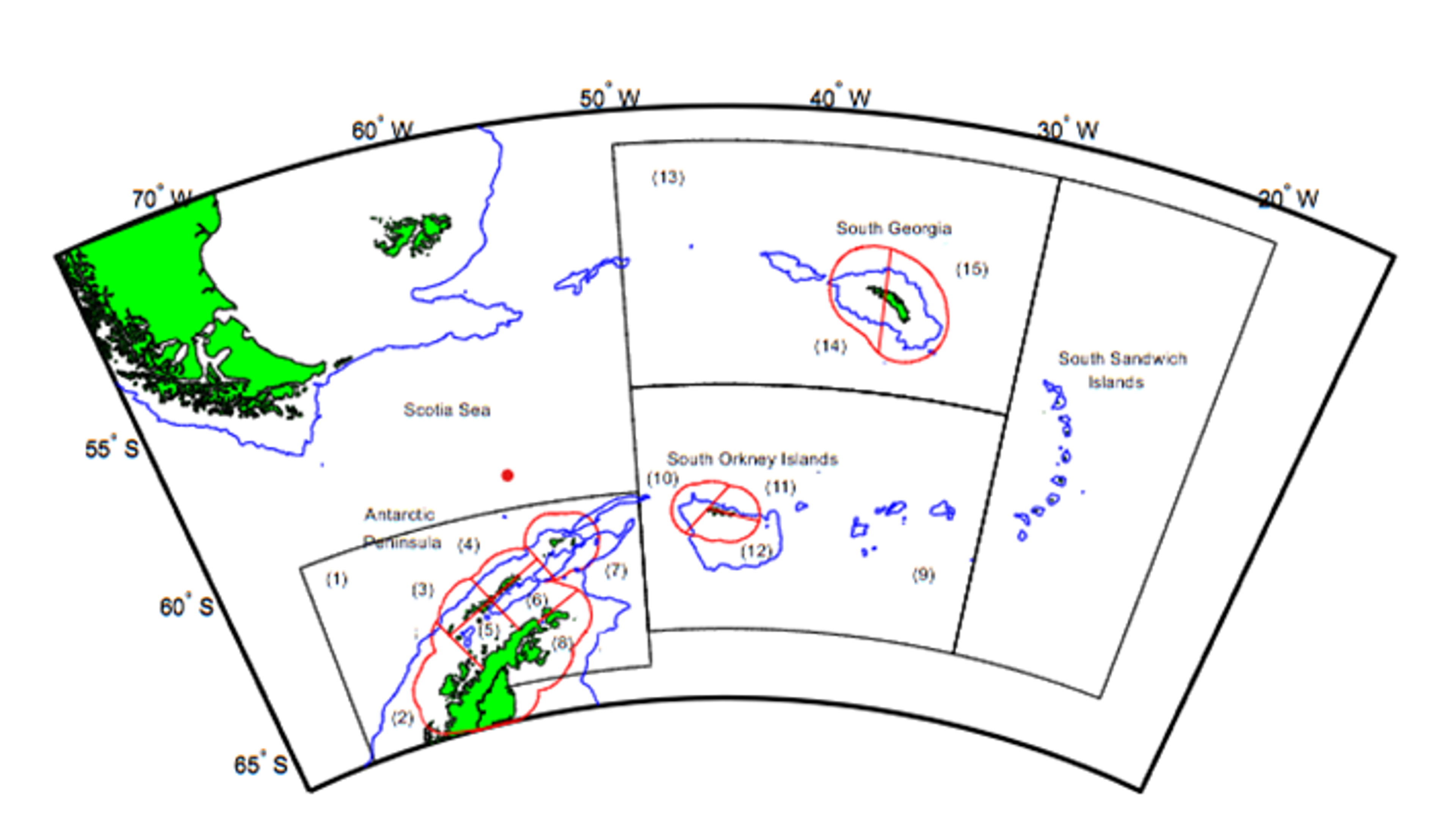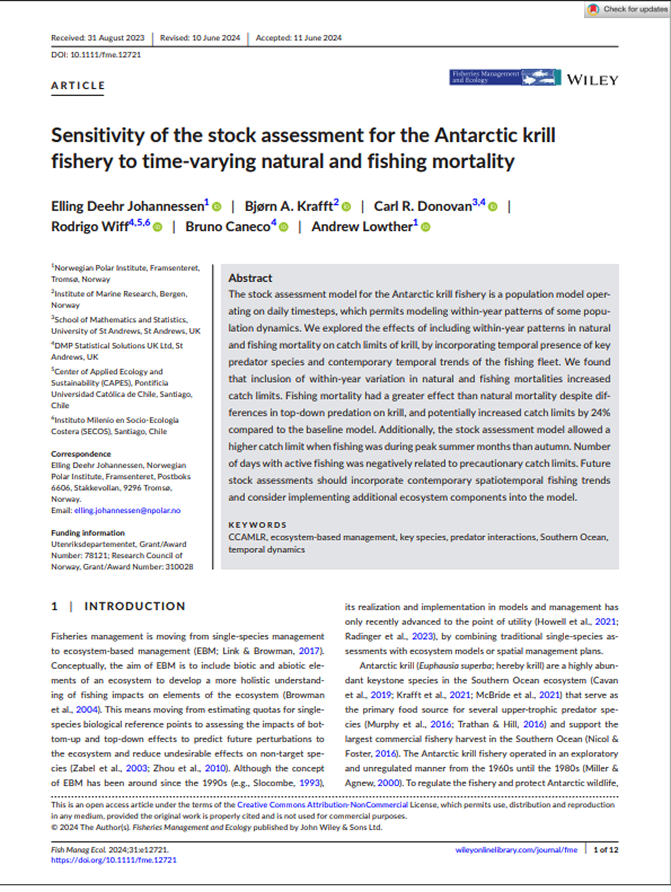Fisheries management
Antarctic ecosystem
Krill (Euphausia superba)
Options for allocating the precautionary catch limit of krill among small-scale management units in the Scotia Sea
Summary
This paper outlines five different methods for dividing the 4 million tonne sustainable krill fishing limit among 15 small-scale management zones in the Scotia Sea. Four methods use fixed allocation rules based on historical fishing records, predator food requirements, krill population estimates, or krill populations minus predator needs. The fifth method uses flexible allocations that adjust based on real-time monitoring of predator populations. Using the first two methods, more than 65% of the total catch would be allocated to three management zones near large concentrations of seals, whales, and seabirds. The third and fourth methods would direct similar amounts to open ocean areas beyond the typical foraging ranges of these predators. The flexible method would limit fishing in traditional fishing areas during years when krill populations are low.

1
Map showing the 15 small-scale management zones in fishing areas 48.1, 48.2 and 48.3. The 1,000 meter depth line marks the approximate edge of the continental shelf around the island groups in the Scotia Sea. The management zones are: (1) Antarctic Peninsula Open Ocean Area; (2) Antarctic Peninsula West; (3) Drake Passage West; (4) Drake Passage East; (5) Bransfield Strait West; (6) Bransfield Strait East; (7) Elephant Island; (8) Antarctic Peninsula East; (9) South Orkney Open Ocean Area; (10) South Orkney West; (11) South Orkney Northeast; (12) South Orkney Southeast; (13) South Georgia Open Ocean Area; (14) South Georgia West; (15) South Georgia East. Note that the Antarctic Peninsula East zone extends partially into fishing area 48.5.Key Findings
1
The sustainable krill fishing limit was set at 4 million tonnes for the Scotia Sea fishery. 2
Fifteen small-scale management zones were created to prevent fishing from becoming too concentrated in any single area. 3
The paper presents four static allocation options based on historical catches, predator demand, krill biomass, or biomass minus predator needs, plus one dynamic option using predator monitoring4
Historical fishing patterns show 66% of catches occurred in three management zones near major predator breeding colonies. 5
Predator food demand is concentrated with 67% of requirements in the South Georgia area. 6
The flexible allocation method would restrict fishing in traditional areas during years of low krill availability, allowing ecosystem-responsive management.7
All proposed allocation methods would have minimal disruption to current fishing operations.

